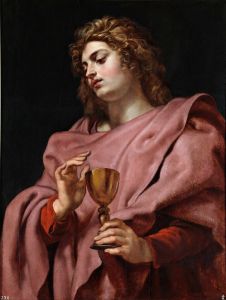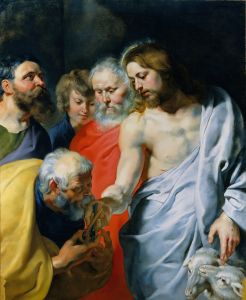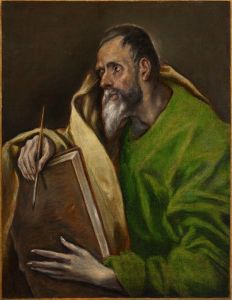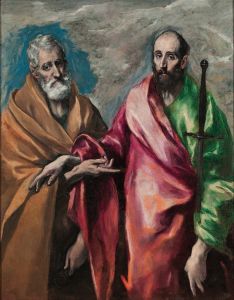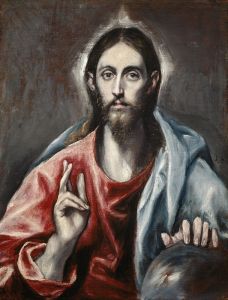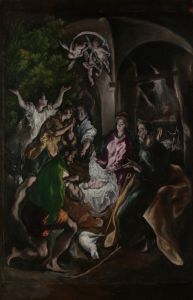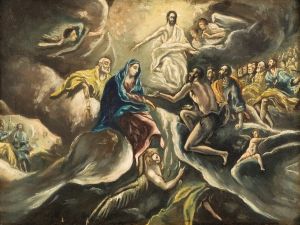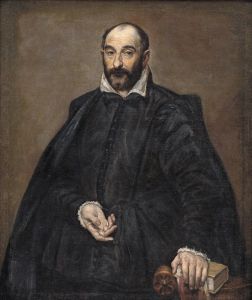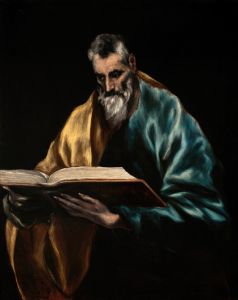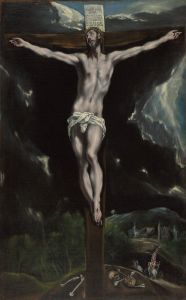
Apostle Saint Paul
A hand-painted replica of El Greco (Domenikos Theotokopoulos)’s masterpiece Apostle Saint Paul, meticulously crafted by professional artists to capture the true essence of the original. Each piece is created with museum-quality canvas and rare mineral pigments, carefully painted by experienced artists with delicate brushstrokes and rich, layered colors to perfectly recreate the texture of the original artwork. Unlike machine-printed reproductions, this hand-painted version brings the painting to life, infused with the artist’s emotions and skill in every stroke. Whether for personal collection or home decoration, it instantly elevates the artistic atmosphere of any space.
"Apostle Saint Paul" is a painting by the renowned artist El Greco, whose real name was Domenikos Theotokopoulos. El Greco was a prominent painter, sculptor, and architect of the Spanish Renaissance, known for his distinctive style that combined elements of Byzantine traditions with Western painting techniques. This particular work is one of several depictions of religious figures that El Greco created during his career.
The painting "Apostle Saint Paul" is believed to have been completed between 1605 and 1610, a period when El Greco was at the height of his artistic powers. It is part of a series of portraits of the apostles, which were likely intended for a religious institution or private devotion. The painting is housed in the Museo del Prado in Madrid, Spain, which holds one of the most comprehensive collections of El Greco's works.
In "Apostle Saint Paul," El Greco presents the apostle with his characteristic elongated form and expressive features, a hallmark of the artist's style. Saint Paul is depicted with a solemn and contemplative expression, holding a book and a sword, which are traditional attributes associated with him. The book represents his epistles in the New Testament, while the sword symbolizes his martyrdom and the "sword of the Spirit," a metaphor from his writings.
El Greco's use of color in this painting is particularly striking. The rich, deep tones and the dramatic contrasts between light and shadow create a sense of spiritual intensity and emotional depth. The background is typically dark, which serves to highlight the figure of Saint Paul, drawing the viewer's attention to his face and hands, which are rendered with meticulous detail.
The composition of the painting reflects El Greco's unique approach to form and space. The elongated proportions of Saint Paul's figure, along with the swirling drapery of his robes, convey a sense of movement and dynamism. This stylistic choice is thought to be influenced by El Greco's early training in the Byzantine tradition, as well as his exposure to the works of Italian Mannerists during his time in Venice and Rome.
El Greco's portrayal of Saint Paul is not just a representation of the apostle as a historical or religious figure, but also an exploration of the human condition and the spiritual struggles inherent in faith. The intense gaze and the expressive hands suggest a man deeply engaged in thought and contemplation, inviting the viewer to reflect on the themes of faith, redemption, and the divine.
The painting is a testament to El Greco's ability to blend different artistic influences into a cohesive and highly personal style. His work has been praised for its emotional intensity, innovative use of color, and the ability to convey complex spiritual themes through visual means. "Apostle Saint Paul" is a prime example of El Greco's mastery and his enduring influence on the art world, making it a significant piece in the study of Renaissance and religious art.





